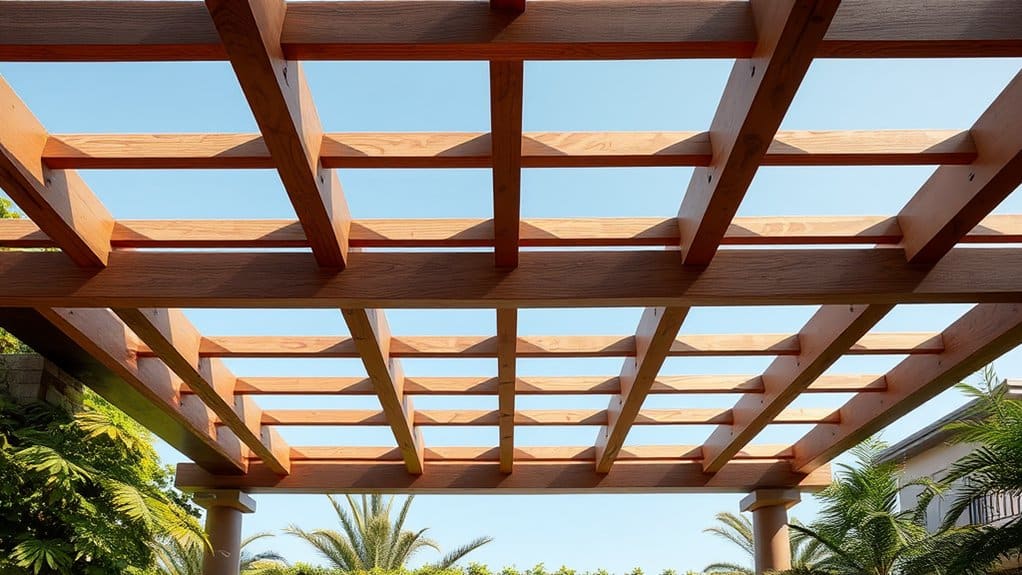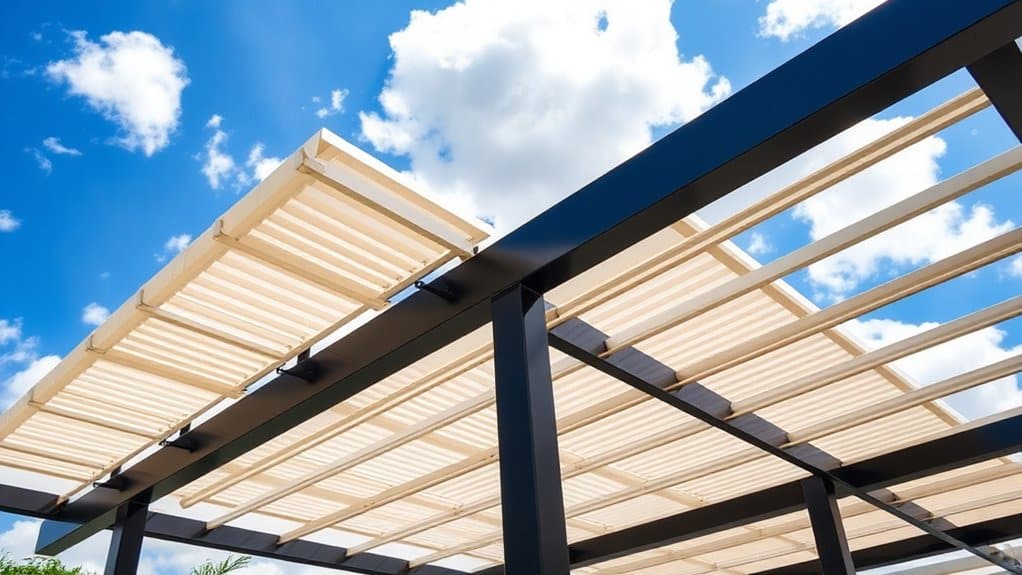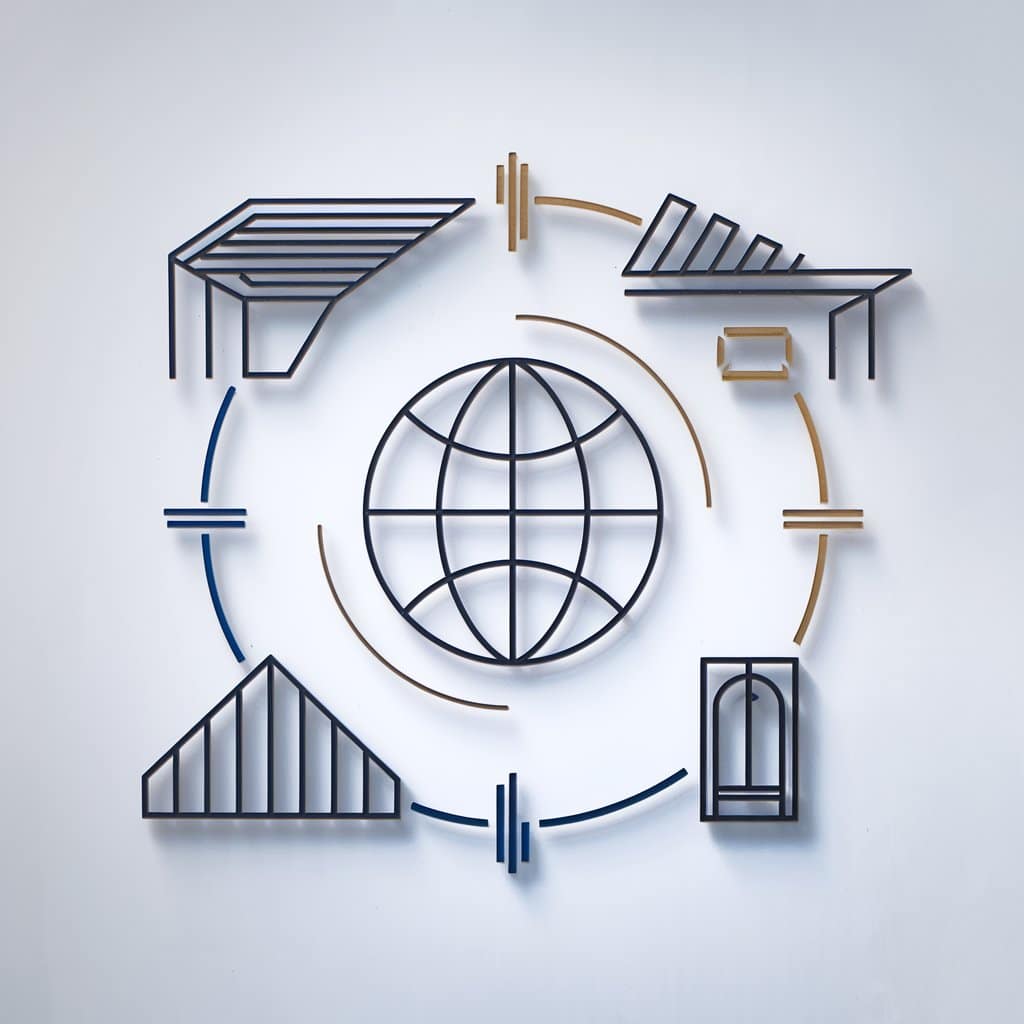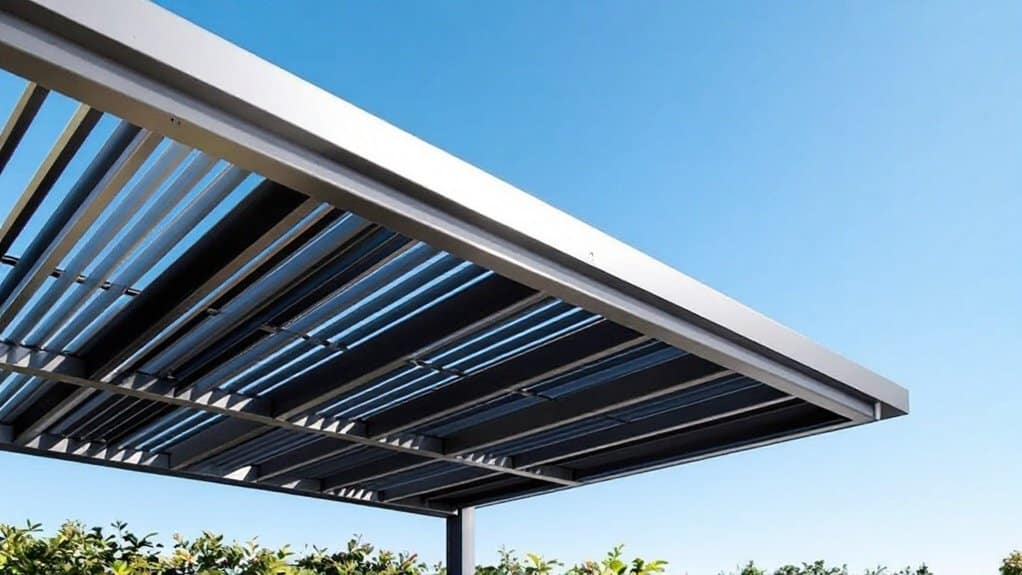Bioclimatic pergolas from Goerres Group feature adjustable louvres that enhance natural light and airflow, ensuring a comfortable outdoor setting.
Their design allows for customized sunlight exposure and rain protection, highlighting the importance of understanding their operational mechanisms and components.
By focusing on these details, users can fully appreciate the benefits and effectiveness of bioclimatic pergolas.
Table of Contents
ToggleKey Takeaways
Bioclimatic pergolas are designed to create a comfortable outdoor environment by effectively managing both temperature and light. Their innovative adjustable louvres provide the flexibility to control how much sunlight enters the space, along with offering protection from rain when needed.
These structures are built with durability in mind. High-quality materials ensure that they can withstand various weather conditions, maintaining their integrity over time. This resilience is essential for enjoying the benefits of a bioclimatic pergola throughout different seasons.
One of the standout features of these pergolas is the incorporation of automated systems. Such technology allows for real-time adjustments, helping to optimize comfort without requiring much manual effort. For example, you can conveniently control the positioning of the louvres through a smartphone app, allowing for a seamless experience depending on the weather.
Customization is also a significant aspect of bioclimatic pergolas. They can be tailored in terms of design and functionality to meet specific needs and preferences. From choosing the color and materials to determining the control systems used, such options ensure that each pergola complements the space it occupies while providing all the necessary features for outdoor enjoyment.
Pergola Structure

The structure of a pergola plays a crucial role in how well it performs, lasts, and looks. When choosing materials for a pergola, you typically have a few options: aluminum, wood, and steel or wrought iron. Each type of material has distinct properties that can influence your decision.
Aluminum, for example, is recognized for its durability and resistance to corrosion. This makes it relatively low-maintenance and a favorite among many homeowners. On the other hand, wood offers a classic appeal but requires regular upkeep to prevent rot and decay. Steel and wrought iron are incredibly strong and can withstand considerable weight, but they may require painting or sealing to guard against rust.
Design features also significantly impact a pergola’s overall performance. The profiles of the beams and how the frame is supported are essential for ensuring stability. A well-thought-out design not only supports the structure but also enhances its functionality.
When selecting the materials and design for a pergola, it’s important to find a balance between durability and how well it fits with the overall architecture of your home. This ensures that you can enjoy your outdoor space without concern for maintenance or safety. By making informed choices, you can create a pergola that offers shade and protection while elevating your outdoor experience. Ultimately, effective design maximizes the usability of the space, allowing you to make the most of your backyard or garden.
Adjustable Louvres
Adjustable louvres play a key role in bioclimatic pergolas by offering a way to manage sunlight and rain protection effectively. These features allow users to customize their outdoor experiences, providing both comfort and versatility in their living spaces.
Typically made from robust materials such as aluminum, wood, or steel, adjustable louvres are designed to last with minimal upkeep, which is a significant advantage for homeowners. The methods for adjusting these louvres are noteworthy as well. They can be operated both motorized for convenience, allowing for remote control and automated changes, or manually for those who prefer a more interactive approach.
One of the standout features of adjustable louvres is their ability to rotate up to 170°. This flexibility gives users precise control over how much sunlight or rain they allow into their space. Such adaptability ensures that outdoor environments can remain comfortable, regardless of changing weather conditions. With adjustable louvres, individuals can easily shift between shaded areas and sunny spots, creating a pleasant atmosphere tailored to their preferences at any given moment.
This capability makes adjustable louvres a practical choice for those looking to optimize their outdoor living areas, giving them control over their environment while staying protected from the elements.
Climate Control

Climate control is key to enjoying a comfortable outdoor environment, and adjustable louvres in bioclimatic pergolas play a crucial role in this. By controlling how much sunlight enters the space, these louvres help manage temperature, which can decrease reliance on air conditioning in the summer and heating during the winter months.
Adjusting the slats allows you to regulate the temperature with ease, making it possible to create a pleasant atmosphere throughout the year. When the louvres are slightly opened, they promote air circulation, which enhances shade and ventilation while also contributing to a cooler space.
This natural ventilation offers a way to regulate airflow, which effectively acclimatizes the interior area. Consequently, it ensures that the air intake is optimized for natural cooling. The capabilities of a bioclimatic pergola to manage both temperature and air circulation are significant in terms of energy efficiency. By relying more on natural elements like sunlight and wind, you can minimize the use of artificial heating and cooling systems.
In essence, this thoughtful design allows you to enjoy your outdoor spaces without the discomfort of extreme temperatures, making it an ideal solution for relaxation and leisure.
Weather Protection
Bioclimatic pergolas go beyond just regulating temperature; they also offer substantial protection against various weather conditions, making them a practical choice for outdoor spaces. This storm resilience is important for those who want to enjoy their patios or gardens without the constant concern of changing weather.
One of the appealing features of bioclimatic pergolas is their adaptability to different seasons and weather events. Their design incorporates several key attributes:
- The waterproof feature ensures that rain does not disrupt outdoor activities, allowing you to stay dry and comfortable.
- Wind resistance means that these structures can hold up against strong gusts, enhancing safety and stability during stormy conditions.
- To tackle the challenges of winter, bioclimatic pergolas are equipped for snow load management, ensuring that they remain sturdy even under the weight of snowfall.
These functionalities work together to create a versatile outdoor space, enabling people to make the most of their environment year-round, irrespective of the weather. By integrating such protective features, bioclimatic pergolas truly extend the usability of outdoor areas.
Custom Features

Bioclimatic pergolas offer a range of custom features that allow you to tailor them to your specific needs, improving both functionality and appearance. You have the option to select different materials like aluminum, wood, or steel. This flexibility ensures that you can design a structure that aligns with your personal aesthetic and requirements.
In addition to material selection, you can choose from various colors, including options from the RAL color chart. This ensures that your pergola can blend seamlessly with your home’s existing architecture, promoting a cohesive look.
Dimensions are also customizable, so you can have your bioclimatic pergola sized to fit your available space and meet your unique requirements. The use of high-quality insulated materials and energy-efficient manufacturing processes ensures that the pergolas not only provide shelter but also support environmental sustainability.
These custom features empower you to create outdoor spaces that are not just functional but also reflect your individual style and values, ultimately enhancing your living experience.
Maintenance Needs
Custom features are just one part of what makes bioclimatic pergolas effective, but their performance and durability heavily rely on proper maintenance. Establishing a regular cleaning routine is crucial for preventing malfunctions and ensuring everything works as it should. Maintaining various components, like motors and actuators, is essential for smooth operation.
It’s a good idea to clean your pergola at least twice a year, ideally during the spring and autumn. This will help you remove any debris and buildup that might interfere with its functioning. When cleaning the aluminum parts, opt for a soft sponge and lukewarm water paired with microfiber cloths. Avoid using abrasive detergents and high-pressure cleaners, as these can cause damage.
Regularly inspecting and cleaning the gutters, side blinds, and mechanical elements is also important. This practice will help support proper rainwater drainage and maintain the seamless operation of your pergola. By sticking to this cleaning schedule and addressing general maintenance tasks, you can greatly enhance the usability of your bioclimatic pergola. This way, you can enjoy outdoor relaxation and entertainment, remaining confident that everything is in good working order. Proper upkeep is essential not only for maximizing its potential but also for extending the life of your pergola.


